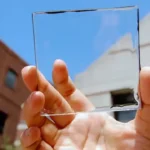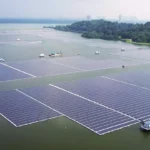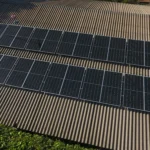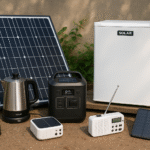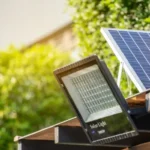A 12v solar panel is a versatile component for off-grid and mobile power systems. Whether you’re outfitting an RV, a cabin, or a remote monitoring station, understanding how these panels work ensures reliable performance.
In this guide, we’ll explore key considerations from choosing the correct module and matching it to your battery to installation tips, maintenance best practices, and cost estimates. You’ll also discover how a 12-volt photovoltaic module compares to higher-voltage panels, and when it makes sense to use one in your solar setup.

Why Choose a 12-Volt Solar Panel?
Low-voltage solar modules are popular for use in small systems and for charging batteries. They pair directly with a 12-volt battery bank or lead-acid deep-cycle batteries, eliminating the need for a step-down inverter. As a result, you get efficient charging with minimal electronics. Moreover, many solar charge controllers are optimized for 12-volt arrays, simplifying system design.
Key LSI Terms to Know
Before diving deeper, here are related phrases you’ll encounter:
- 12 volt solar panel
- 12V photovoltaic module
- 12V off-grid solar panel
- Solar panel for 12-volt battery
- 12v solar kit
- 12v solar panel price
- Monocrystalline 12v solar panel
- Polycrystalline 12v solar panel
- 12V battery charging panel
- 1000 volt solar panel
Types of 12-Volt Solar Panels
Choosing the right cell type affects efficiency, durability, and cost.
Monocrystalline vs. Polycrystalline
Monocrystalline panels use pure silicon crystals. They offer up to 22% efficiency and perform better in low light. Polycrystalline panels are less expensive but slightly lower in efficiency (15–18%). Both types are available in 12-volt configurations.
Amorphous Thin-Film Panels
Thin-film panels use layers of semiconductor materials on a substrate. They handle shading and high temperatures well, but their efficiency hovers around 8–12%. You might choose thin-film if weight, flexibility, or budget is your priority.
Integrated Solar Kits
Many manufacturers sell complete 12v solar kits. These bundles include a solar panel, charge controller, mounting hardware, and cables. Kits simplify setup for beginners and often offer a better value than buying components separately.
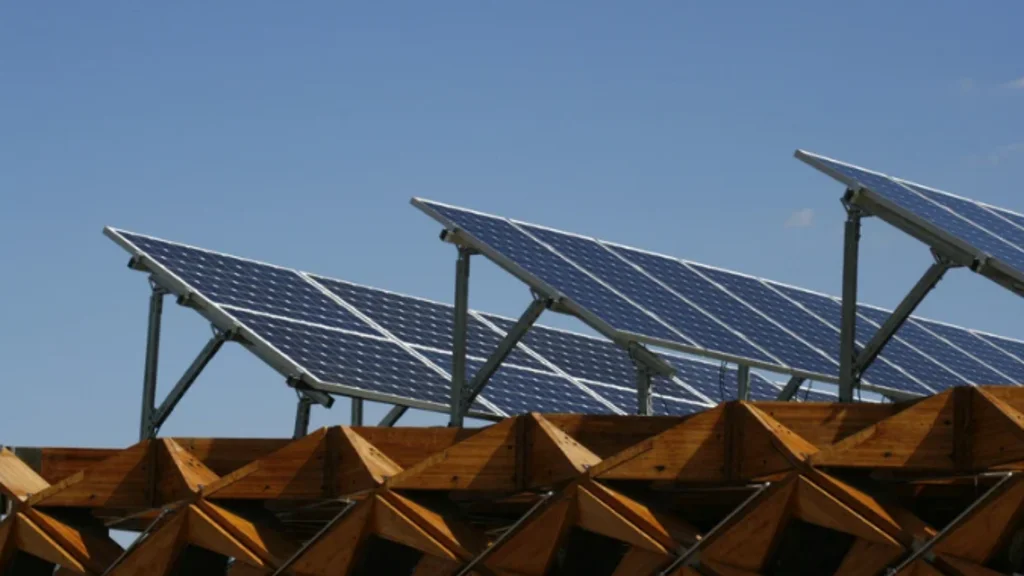
How to Size Your 12-Volt Solar System
Proper sizing ensures you generate enough sunpower energy without overspending.
1 Calculate Daily Load
List all 12-volt devices you plan to run: LED lights, USB chargers, pumps. Add up their watt-hours per day.
2 Adjust for Sunlight Hours
Divide your daily watt-hour need by average peak sun hours (e.g., 4–6 hours in many regions).
3 Select Panel Wattage
For example, if you need 400 Wh/day and get 5 peak sun hours, you need at least an 80 W panel (400 ÷ 5 = 80). It’s wise to oversize by 25% to account for losses.
4. Choose Battery Capacity
Match your panel to a 12-volt battery bank sized to hold 2–3 days of autonomy. For 400 Wh/day, a 12-volt 100 Ah battery (1,200 Wh) provides comfortable backup.
Installation Best Practices
Correct installation maximizes energy harvest and longevity.
Panel Placement and Tilt
Angle your panel equal to your latitude for optimal year-round output. South-facing placement in the northern hemisphere captures maximum sun. Ensure the panel is free of shade from trees or structures during peak hours.
Wiring and Connections
Use appropriately gauged MC4-compatible wires to minimize voltage drop. Keep runs under 10 m when possible, or increase wire size. Employ proper crimping tools and waterproof connectors to prevent corrosion.
Charge Controller Selection
A PWM (pulse-width modulation) controller works for simple 12-volt arrays. For larger systems or if you want faster charging, use an MPPT (maximum power point tracking) controller. MPPT units can boost charge efficiency by up to 30% in cool conditions or partially shaded setups.
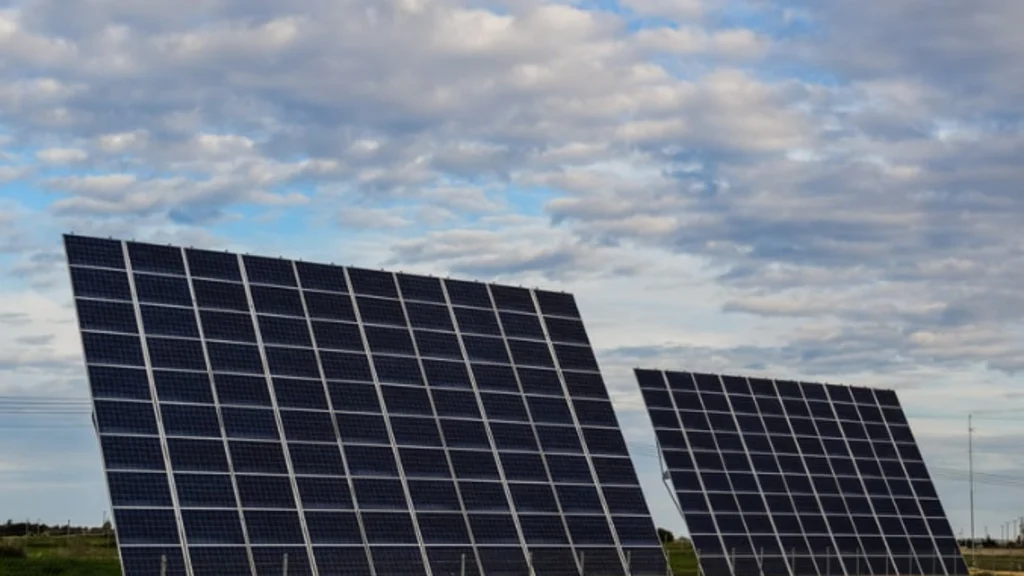
Maintenance and Care
Routine upkeep keeps your 12v solar panel performing at its best.
- Cleaning: Wipe solar panels cleaning brush or cloth and mild soapy water every 3–6 months.
- Inspection: Check for cracks, loose wiring, or corrosion at terminals annually.
- Performance Monitoring: Use the controller’s display or a remote monitoring system to track voltage and current. Sudden drops may signal dirt buildup or wiring issues.
Cost Considerations
Prices vary by technology, brand, and kit contents.
| Panel Type | Wattage Range | Price Range (USD) |
| Monocrystalline 12v Panel | 50–120 W | $70–$180 |
| Polycrystalline 12v Panel | 50–120 W | $50–$140 |
| Thin-Film 12v Panel | 50–100 W | $40–$100 |
| Complete 12v Solar Kit | 100–200 W | $200–$450 |
Buying a kit often reduces per-watt costs and ensures component compatibility. However, DIY enthusiasts may mix and match panels, controllers, and batteries for custom solutions.
Comparing 12-Volt vs. Higher-Voltage Panels
While 12v solar panel setups are ideal for small systems, larger installations often use 24 V or 48 V arrays. Higher-voltage panels reduce current, allowing for thinner wires over longer distances. However, if your system is under 200 W or directly tied to a 12 V battery, a 12-volt panel remains the simplest choice.
Common Applications
12-volt solar panels are well suited for:
- Recreational vehicles and camper vans
- Boats and marine applications
- Off-grid cabins and tiny homes
- Remote telecom and weather stations
- Battery chargers for lighting, pumps, and electronics
Troubleshooting Tips
If your panel underperforms:
- Check Voltage at Noon: Open-circuit voltage should read ~22 V for a nominal 12 V panel.
- Inspect for Shading: Even small shadows can disproportionately reduce output.
- Verify Controller Settings: Ensure correct battery type and voltage settings.
- Test Wiring Continuity: Look for breaks, loose connections, or damaged insulation.

Frequently Asked Questions
- Can I connect two 12 V panels in series?
Yes, series wiring produces a 24 V nominal array, suitable for 24 V battery banks or MPPT controllers. - Do 12 V panels work in cold climates?
They often perform even better in cool conditions, as lower temperatures increase voltage output. Just clear snow and ice promptly.
- How do I know when to replace my panel?
Most panels carry a 25-year performance warranty. Replace if output drops below 80% of rated power or if you see physical damage.
- Can I expand my system later?
Yes. Use an MPPT controller that handles multiple panels. Ensure your battery bank can accept the extra charge current.
- What maintenance does a 12 V solar panel require?
Minimal upkeep: cleaning, visual inspections, and occasional performance checks are usually sufficient.
Conclusion and Next Steps
A 12v solar panel offers a straightforward way to harness the sun’s power for small-scale and portable applications. By selecting the right panel type, properly sizing your system, following best installation practices, and maintaining your equipment, you ensure reliable off-grid power for years. Ready to design your ideal 12 V solar setup? Explore compatible panels and kits from trusted manufacturers, and start enjoying clean, renewable energy today.


